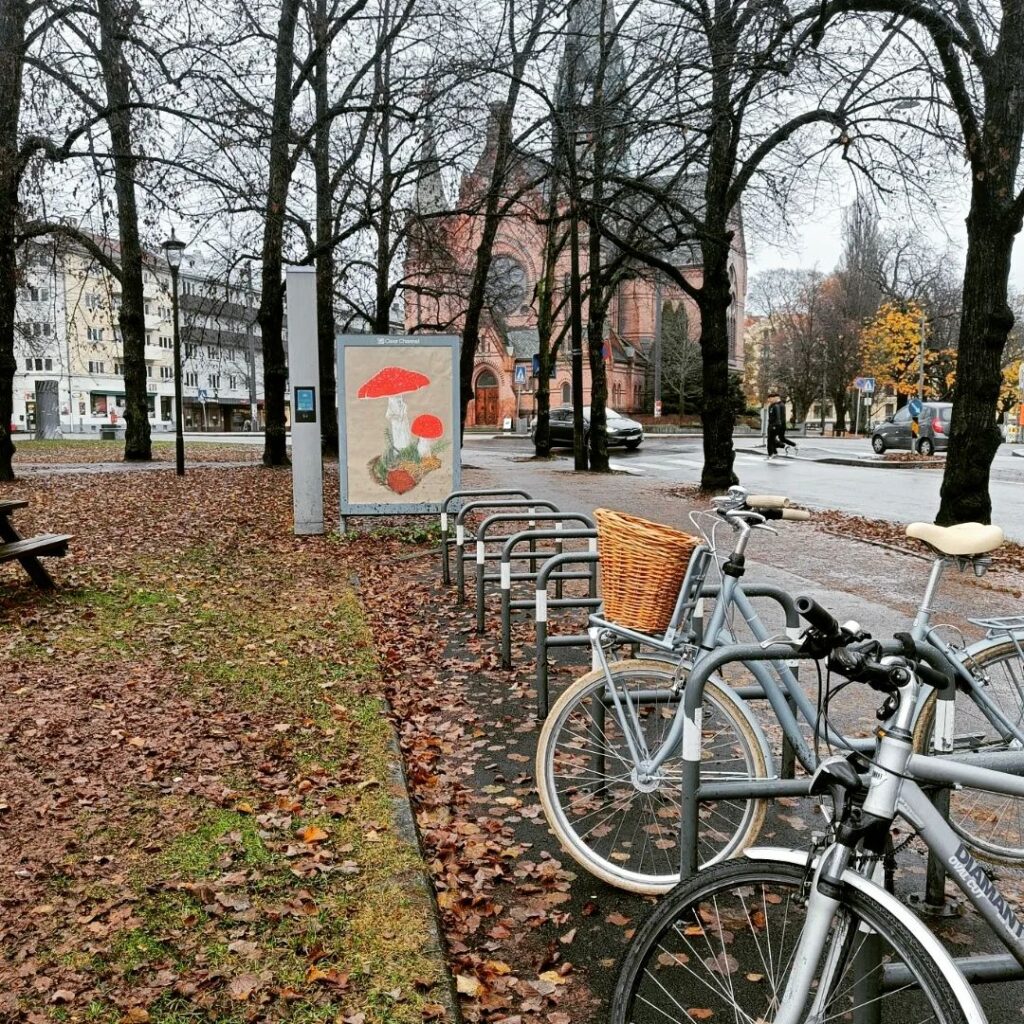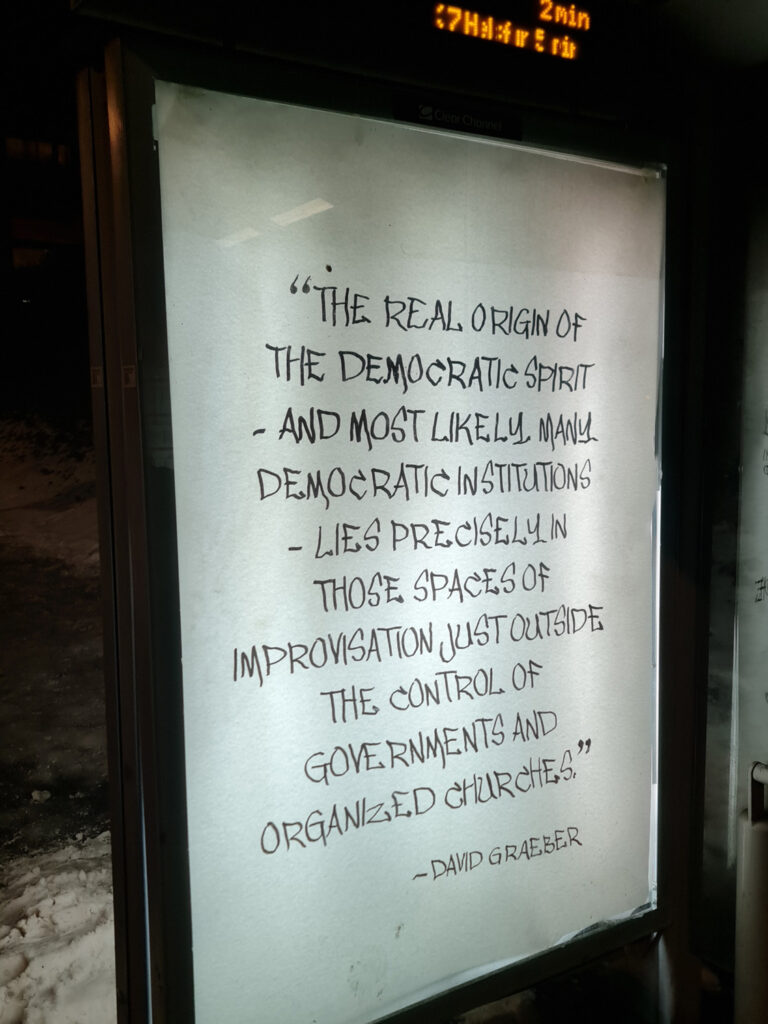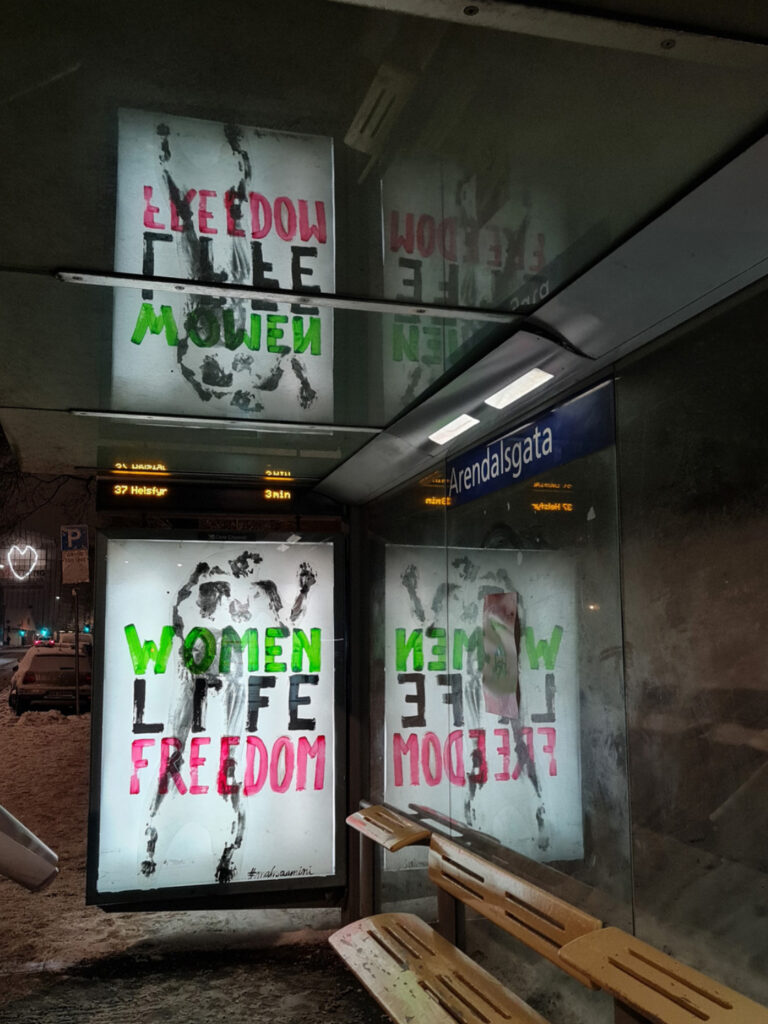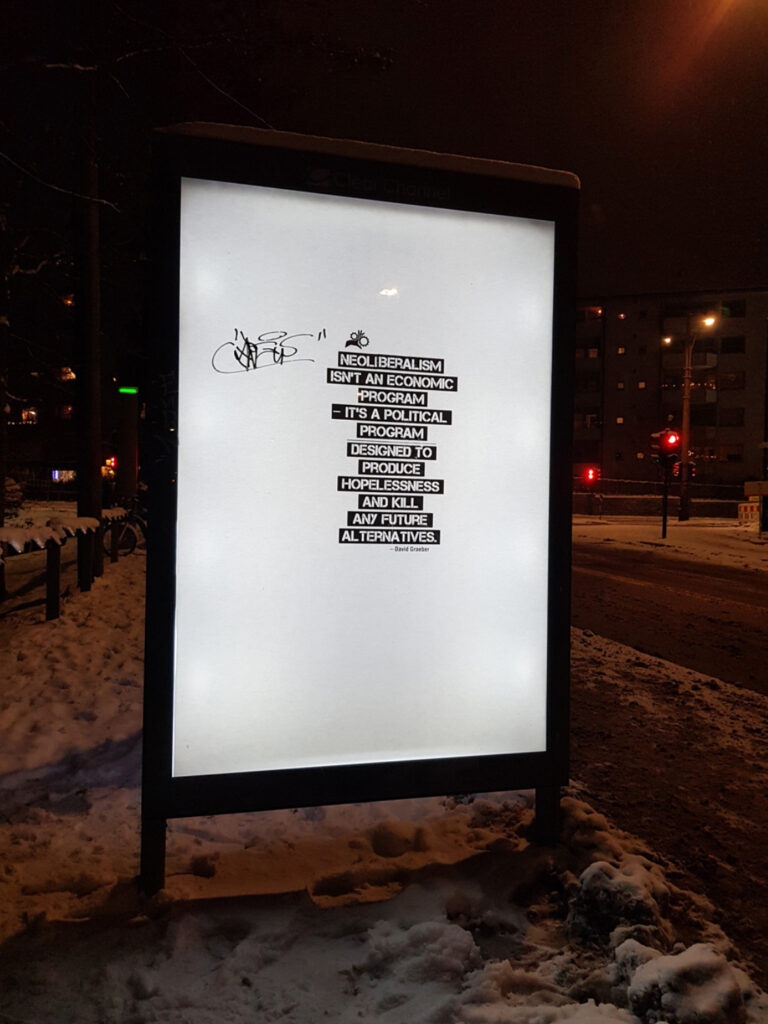Who has the power and authority to communicate their message in public spaces? The commercialization and privatization of public urban spaces has been going on for many years. Do not despair, there are creative and thought-provoking methods to influence what can be displayed in the urban space. With Door opener to freedom of expression, you can open doors to a larger space of expression and spread your own message.

Introduction
In exchange for a handful of city bikes and public toilets, the multinational advertising companies JCDecaux and Clear Channel were granted from 2001 an exclusive right to dictate massive advertising campaigns in public spaces, with messages that communicate increased consumption, promote an outdated view of gender roles, affect our mental health and spreads light pollution that harms people, animals and the environment.
Today, there are few places where people can legally put up posters. Small practitioners within culture, sports and voluntary or non-profit activities lack financial muscles and become invisible. The price for a legal advertisement on the surfaces of the multinational advertising companies is sky high, which determines who will be allowed to be visible and on what terms. This is a democratic problem.
Adbusting, brandalism, culture jamming, détournement and subvertising are used for much of the same art and activism strategies – and a little for each other, it might seem.



Subvertising is an English loanword composed of subvert («subvert») and advertising («advertise»). The term refers to spoofing or parodying advertising posters. Forms of subversive advertising involve, for example, changing well-known logos, expressions and symbols, so that they receive a new and often surprising message.
Adbusting is an English loanword composed of ad- («advertising») and busting, («take away» or «wipe away»). The term refers to changing notices and existing advertising posters by removing or adding letters.
Brandalism is a term composed of brand («brand») and vandalism («vandalism») and is used for an anti-advertising movement. This form of creative activism involves making parodies or fakes that replace advertising posters in public spaces.
Company logos and information signs are intended to give recognition, attention and positive associations to the business, but with minor adjustments they can be changed to display the exact opposite message, preferably with a humorous touch. Subvertising, adbusting and brandalism can therefore be thought-provoking and give a new perception of what was the original intention.






Sometimes these forms of expression are considered vandalism rather than art, but this activity can also provide witty and important commentary if done wisely. The brandalists e.g. works to draw attention to political and social issues such as overconsumption, environmental destruction, visual pollution (advertising in public spaces), debt and body fascism.
Advertisements produced by these movements are often pasted over billboards or hung up in locked advertising stands owned by various companies. The locks of the cases vary from country to country and from company to company. In Norway, it is JCDecaux and Clear Channel that dominate on the fitting front, and the latter’s fitting has square keyholes the size of the fastening part on a normal indoor door handle. If this is true, the doors are open to full artistic expression – for the good of the planet.
Instructions
1) Study closely what is written about procedure the various mounted sizes at http://brandalism.ch/
2) Choose an ad display case that you think has a suitable location in terms of wanted and unwanted attention.
3) Check that the Door opener for freedom of expression can be used as a key. The keyhole should be located on the underside if it is a Clear Channel case.
4) Develope an excellent idea for poster design and create the motif either by hand or order it from a print shop.
5) Get to work.
